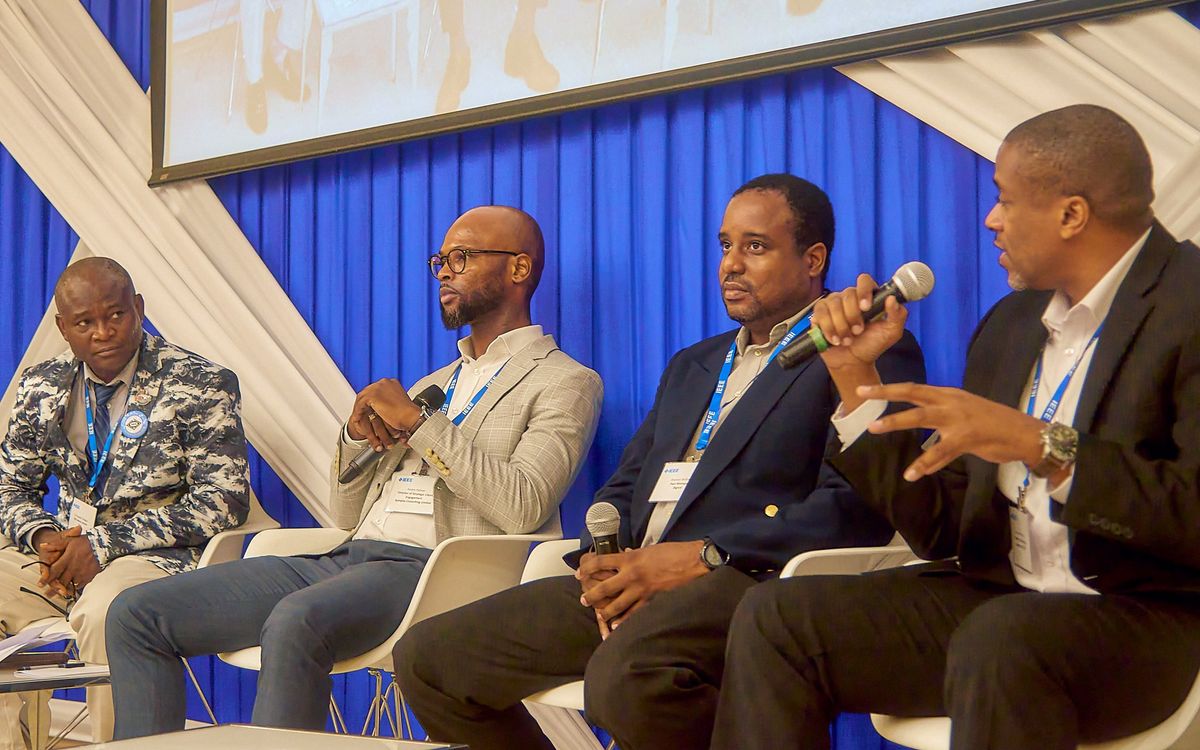Having returned from Copenhagen, rested, and taken a little time to digest the two-page statement of principles the Copenhagen climate conference adopted at the very last minute, I'm going to climb way out on a limb with two claims about it and the process that led to it: The admittedly anti-climatic Copenhagen Accord (available on the UNFCCC website) is better than it may look at first glance; and the undeniably chaotic process that accompanied its negotiation and adoption was not as bad as reported. Though the conference organizers did a terrible job of handling the non-governmental organizations that represent the natural constituency for a strong climate agreement, they pushed negotiators hard to come up with something meaningful and may have contributed at least one crucial idea.
The Copenhagen Accord opens with a statement that climate change is to be combatted on the basis of "common but differentiated responsibilities"—the accepted formula for accommodating developing countries that are not yet ready to commit to a program of greenhouse gas reductions—"recognizing the scientific view that the increase in global temperature [in this century] should be below 2 degrees Celsius."
The next paragraph says, more specifically, that the nations of the world "should cooperate in achieving the peaking of global and national emissions as soon as possible, recognizing that the time frame for peaking will be longer in developing countries." Successive paragraphs call for a global climate adaptation program, with emphasis on the least developed countries, island states, and Africa, and mitigation aid for such countries coming to $100 billion a year by 2020. Countries classified in the Kyoto Protocol as Annex 1 (those required to make emissions reductions) are to submit 2020 targets to the climate secretariat by the end of January next year. Non-Annex-1 countries (those not required as yet to make emissions reductions) are to submit statements of what mitigation actions they propose to take.
The notion of peaking that is enunciated prominently in the accord's key second paragragh first came to my attention in a talk given at Columbia University early in the fall by Denmark's Connie Hedegaard, the conference chair. She said that even if fast-developing countries like China, India, and Brazil are not ready to commit to a schedule of emissions reductions, they should at least say when they expect and plan for their emissions to peak. Though she came under a lot of fire from developing countries at Copenhagen and got bad press, only to be replaced by Denmark's prime minister in the middle of the second week when push was coming to shove, Hedegaard may have contributed the idea that enabled China and the United States to bridge their radical differences—the U.S. demand that China commit to reductions, and China's for sharper U.S. reductions and generous aid for low-carbon technology. The implicit idea behind the appendix to the accord, in which advanced industrial countries have to state (and, by implication, be ready to defend) emissions targets and developing countries state (and defend) mitigation strategies, is that everybody will be required to say when their emissions will peak and then start declining.
Of course that is a far cry from what climate intellectuals and activists around the world had hoped for. But it may be the most that could reasonably be expected.
Perhaps the most stirring event to take place in Copenhagen during the two week conference was a downtown church service, with celebrities like South Africa's Bishop Tutu and climate activist Bill McKibbon participating. McKibbon has become closely associated with a global grassroots crusade called 350.org, which seeks to mobilize the world around the idea of reducing carbon dioxide concentrations in the atmosphere to 350 parts per million (versus 390 today and 270 pre-industrial); at the end of the service, the church bells tolled 350 times. Needless to say, what comes out of the Copenhagen Accord even on the most optimistic estimates will come nowhere close to getting us back to 350, and only if everybody joins in its implementation in the most sincere spirit will it keep us below 450--roughly the level scientists say is required to prevent this century's temperature rise from exceeding 2 degrees Celsius. Following release of the agreement, the Huffington Post published reactions from Greenpeace, Friends of the Earth, and McKibbon denouncing the Copenhagen outcome. Greenpeace called Copenhagen "a crime scene," while Friends of the Earth said the accord was "a sham."
The New York Times, in an excellent wrap-up written by two correspondents with contributions from four other reporters, characterized the agreement as a "grudging accord," and so it is. Nobody is satisfied with it. But consider the obstacles: the United States came in facing a world hostile because, for ten years, it has done so little to reduce its emissions and resentful that the Johnnie-Come-Lately now want to seize leadership and set conditions; the whole industrial world encountered the wrath of the developing nations, which suddenly have taken to blaming all their intractable problems on climate change; China and India knew they would come under huge pressure from the United States, Europe, and Japan to make emissions reduction pledges that they feel unready for. None of these differences could be immediately reconciled without some country's leadership being accused by its constituents of giving in to extortionist demands from somebody else.
Under the circumstances it was perhaps a clever ploy that Obama made a big deal out of emissions verification by countries like China. Naturally China was insulted and so there was a big fuss. The more that fuss goes on the less attention will be paid to the costly and risky compromises the countries will have to make on really serious issues to move forward.
As for the mistreatment the NGOs suffered, it didn't feel as bad as it sounded. As I stood in line with a handful of people I got to know rather well in five or six hours, it became apparent that even though some had come half-way around the world to do something that they now couldn't get into the convention hall to do, most didn't really care all that much. (If they had, there would have been a riot.) If you were there, by definition you cared about climate, and the real reason you were there was simply that you wanted to be.


